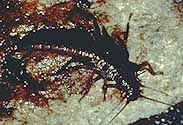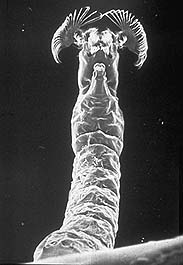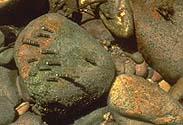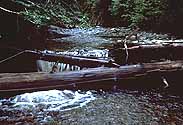There is always an exception. There are more grazers and very few shredders in riffle samples of macroinvertebrates in streams west of the Cascades in Washington. And that is where data collection protocols recommend sampling. But, along the margins and in leaf packs of the streams, there may be more shredders.

stonefly
Photo: RN
Habitat:
Shredders take advantage of leaves, sticks, and twigs. Areas that can
trap and hold this organic matter are attractive to these species.

blackfly
Photo: XXX
-
Filterers, like blackflies, are couch potatoes: they sit around
and wait for food to come to them.
Habitat:
Collector-filtering invertebrates need large, stable rocks or logs to hang onto while they wait for food suspended in the water to reach them.

caddisflies
Photo: XXX
- Gatherers, like some caddisflies, actively seek
their supper.
Habitat:
Collector-gathering invertebrates live in streams with medium-large rocks. Organic plant and animal material that collects among the stream substrate provide their food.

mayfly
Photo: BC
Habitat:

Medium sized streams (order 4-6).
More sunlight gets in, the water warms up and increased nutrients encourage the growth of algae.